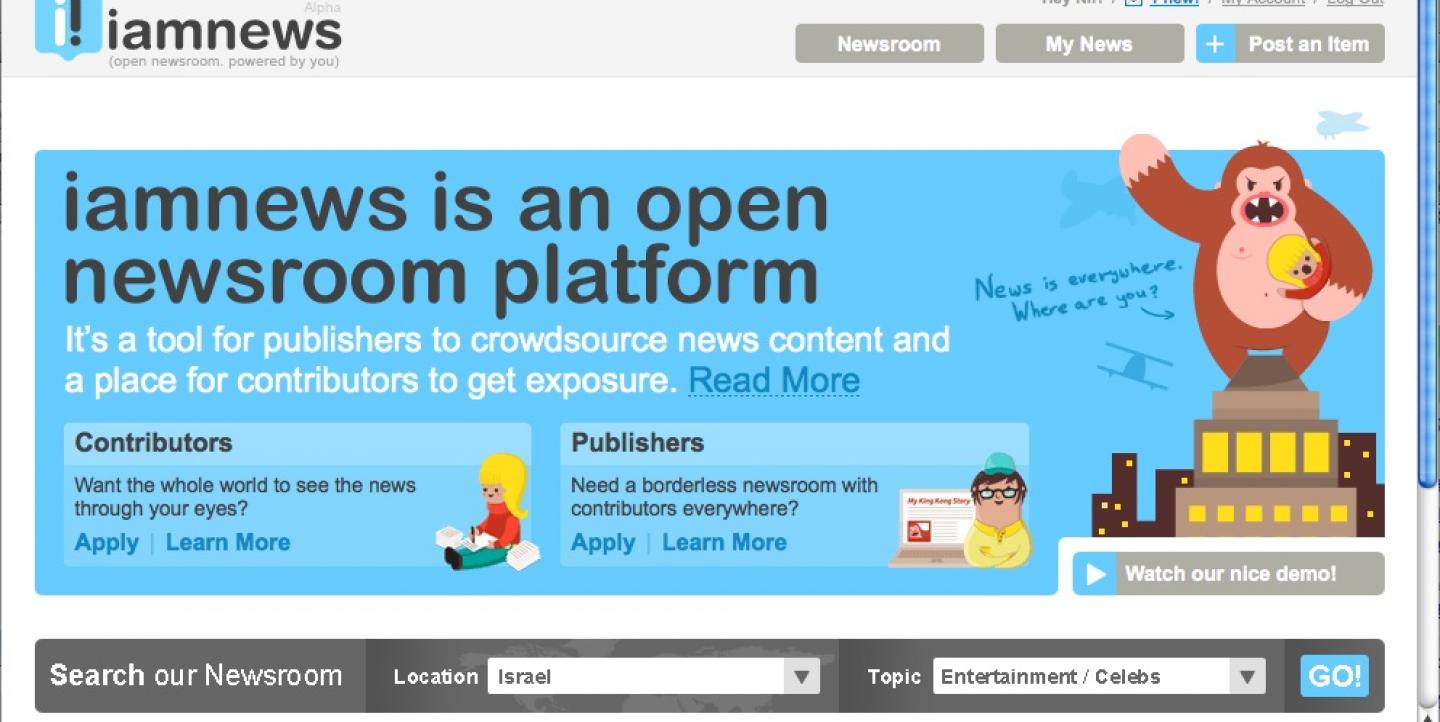This is the fifth installment of an IJNet interview series that takes an in depth look at the operations of various online news platforms, shedding light on the future of global media as envisioned by thought-leaders around the world. To read last week's piece, on GroundReport, click here.
Technological advancement and economic constraints have always been major factors influencing the direction in which journalism would progress. While existing organizations have had to revise their strategies to deal with increased competition and changes in popular methods of discourse, a new wave of media houses have emerged as new opportunities arise from the changing environment.
In this series IJNet has highlighted four organizations that operate in the same medium while adopting specific formulae for acquiring news content, such as citizen journalism, unmanned newsrooms, foreign correspondence and hyperlocal news. But what if we consider a model that is applicable to all kinds of journalism imaginable?
With its first version launched online on December 1, 2008, iamnews.com is still in its early days compared to other notable online news platforms. But its model of operation presents an innovative way in which publishers and contributors can communicate and work with each other, irrespective of the method of newsgathering. The organization won the people's choice award at the TechCrunch50, a San Francisco IT conference that seeks to find and launch the best start-ups in the information technology industry.
Last week, IJNet writer Zul Maidy interviewed Nir Ofir, founder of iamnews. Ofir, an Israeli web entrepreneur, conjured up iamnews' model of crowdsourcing news content while writing a science fiction novel that he started more than three years ago, according to the iamnews blog. While describing the adventures of reporters and their sophisticated means of transmitting their information, Ofir realized that this was not the world of science fiction, but something which could be done with today's technology.

ZM: Can you describe iamnews' working model?
NO: iamnews is a content exchange network that simply connects publishers and reporters from around the world. It helps extend their own professional networks and enable them to work together in a borderless environment. For publishers it is a lace to assign news tasks to an international network of reporters and photographers and view a pool of content created by those reporters. For freelance reporters it is a "placer" where they can take assignments or post content on their news wire.
ZM: How does iamnews work from a journalist's standpoint?
NO: The system will act as an agent for all registered reporters and invite them to pitch their stories based on their location and expertise. Registration is free, short and easy. Publishers will pay for the services of the journalists in our system per project or as a part of our awarding system.
ZM: What is iamnews' objective in employing this model of crowdsourcing?
NO: Basically we are trying to bridge the gap between what both sides want, to connect with each other, but cannot do it today due to language barriers and the lack of single central spot for both sides to get familiar with each other when needed. In times where most media companies shut down bureaus and cut down on resources, depending mostly on big generic wire companies, we see ourselves as a future alternative. We aim to bring together voices and footage in a cost effective and different way.
ZM: How do you feel iamnews is different from other online news platforms?
NO: We think that iamnews is different, since it is focused on a solution that will connect publishers and reporters in real time and not as much in the journalistic aspects of what we do, whether it is citizen journalism, pro-am journalism in which professionals and amateurs work together, mojo (mobile journalism) or so on. We are focused on creating an open and connected environment that will make it possible.
ZM: At what stage of development is iamnews right now?
NO: We are still in "alpha mode." This means that we actively recruit tens of new reporters and photographers every day and continually test our system. In May, we will open our newsroom that will enable publishers to create assignments, both private and public, in our system.
ZM: How do you see iamnews benefiting journalists?
NO: We will work hard to promote the journalists so they will have more chances in taking part of this project and will educate them so they will again, be valuable for the publishers using iamnews but, we are not taking a major editorial part in our daily work. We are focusing in connecting people to people and not just stories to the media.
ZM: How do you see the future of journalism?
NO: Our view is that the only journalism in the future will be online journalism - highly connected, everybody is invited, rich media, always on.
To find out more about iamnews.com, go to http://www.iamnews.com/.

